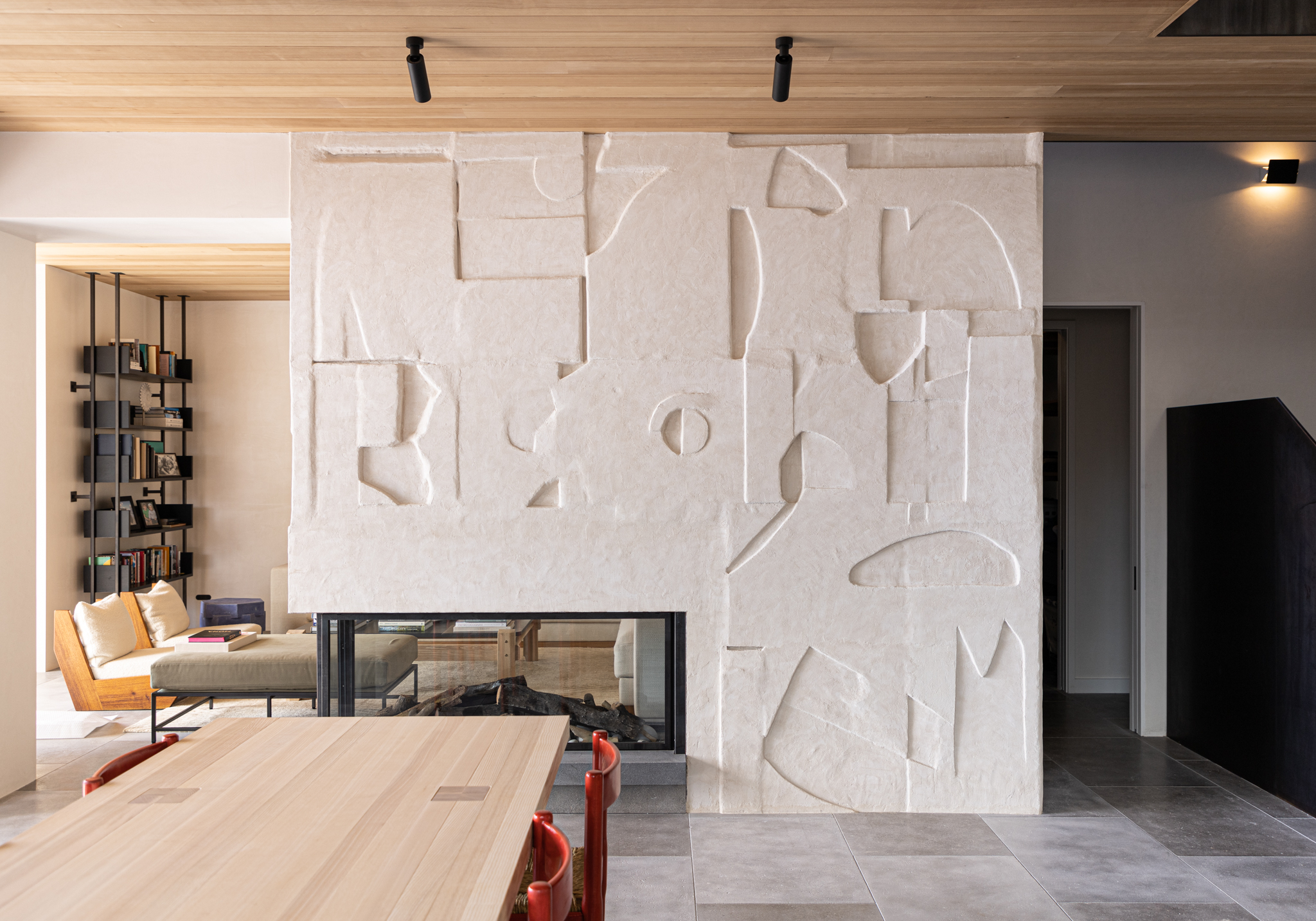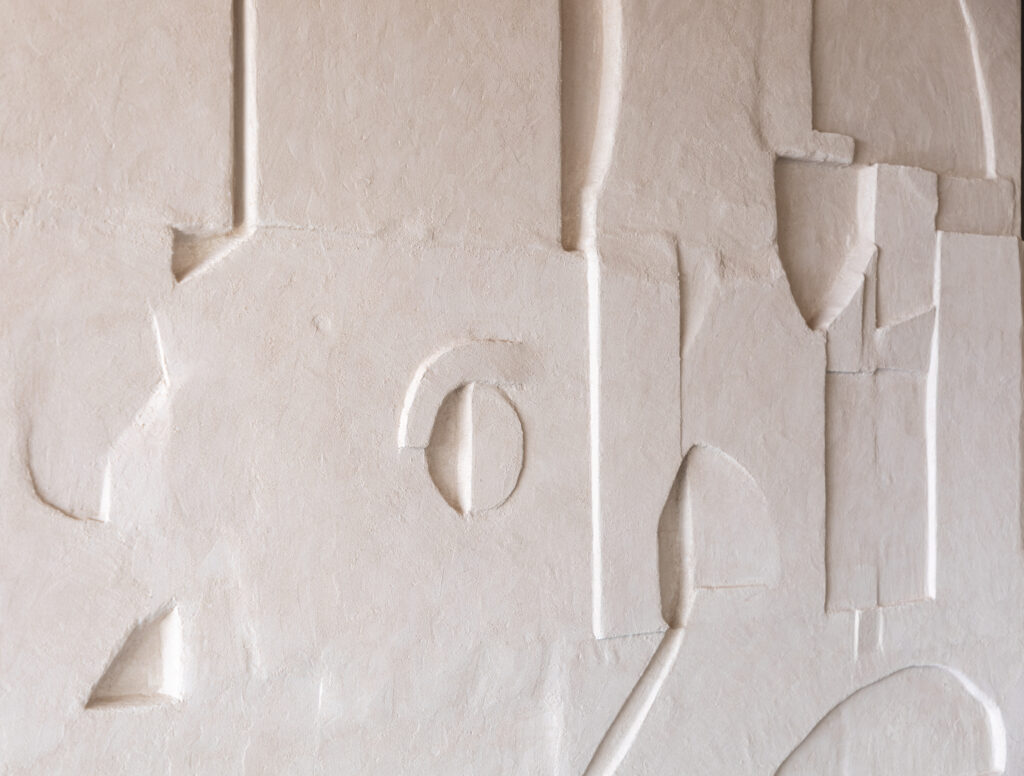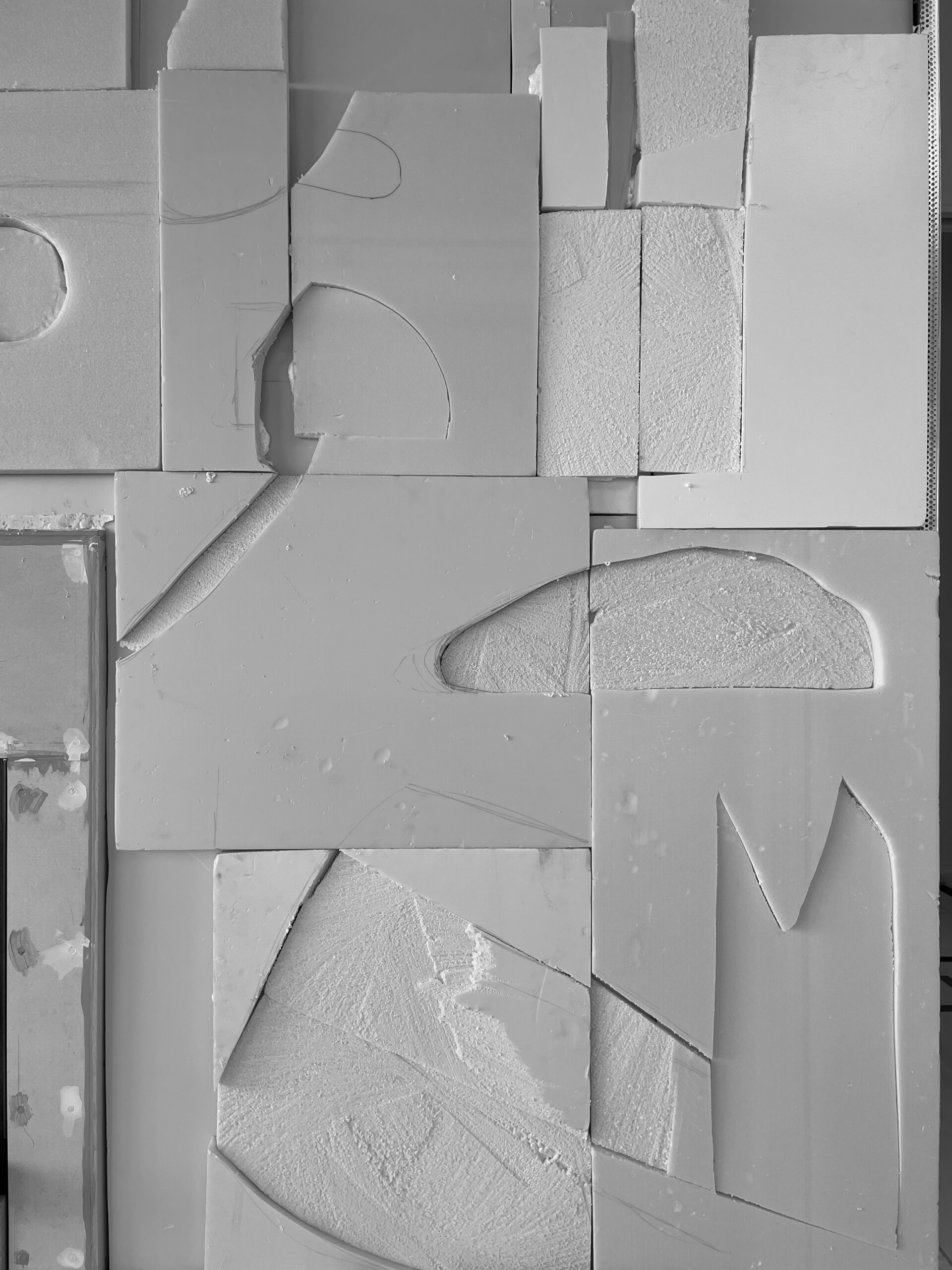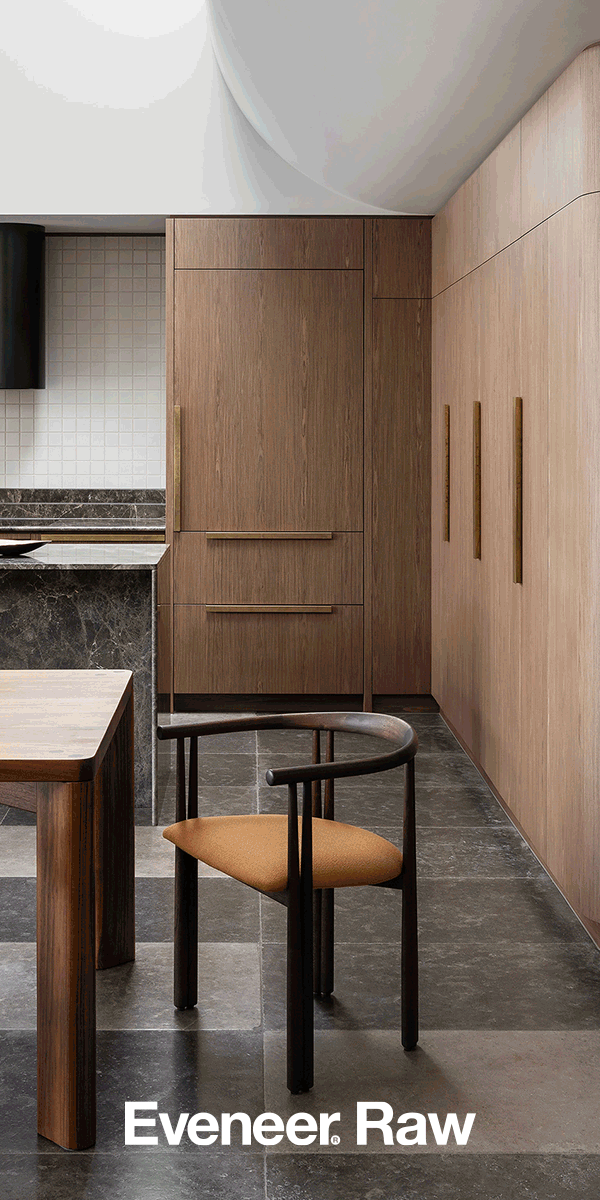With an opportunity to restore the entrance of the Art Gallery of Western Australia to its original Brutalist roots, Nic Brunsdon offers this iconic...
Mason Kimber’s Chimney
A new site-specific commission for a private home in Bronte, on Gadigal Country, sees artist Mason Kimber create a relief in situ, calling on the surface histories of the local area.
Essay
Victoria Scott
Photography
Mason Kimber

When you look at the skin of an old building, the surface tells a story. The passage of time can be expertly hidden or left in plain sight – whether perfectly restored or a residue of what was, the past remains etched into its worn façade. These silent stories, embedded in the things we don’t see, are part of the magic of Mason Kimber’s work – as embodied in his first on-site commission, Bronte Wall Commission.
Conceived on site across a four-week period in Sydney’s Bronte, on Gadigal Country, the work captures minutiae from the façades of different sites in the area, gathered during the artist’s own ramblings – a process of combing surrounding spaces to discover and record moments frozen in time.
Across the Bronte gully, waves roar and smash against fossilised rocks. Ancient formations, carved by the ocean’s ebbs and flows over thousands of years, sit jagged and leering among a fresh, furtive bed of tropical plant species. Dripping shades of green nestle among damp layered rock, providing a dramatic back drop for the seaside Art Deco architecture that informs most of the local houses. Like an explorer, Kimber collects specimens (photographs) of the area to discover and record time gone by. By meshing and merging his collected samples, a multitude of moments, spaces, places, monuments, markings and times converge in the rich tapestry of a large 3m x 3m site-specific sculpture that is as commanding as the giant rock formations that caress the local coast line.


A warm cream surface reminiscent of carved stone or limestone, with abstracted imprints from the outdoors, holds resonances to a geometricism just as it evokes mid-century architecture. The piece could just as equally merge into the rock formations below as it could splinter into minimalist, modernist sculptures. There is a flavour of Brancusi’s monochromatic stone carvings here, which fits beautifully with the surrounding Art Deco buildings.
Fully integrated into its architectural setting, the sculpture interacts with the domestic
space in which it is constructed. The push and pull of raised and receding spaces on the sculpture are enhanced by varied light and shadow at different times of day. Monumental and proud, yet seamlessly cohesive with the space, the sculpture is the result of an intentional layering of multiple images – Kimber’s specimens – built up over time like fossilised relics. By tracing the shapes of photographs onto transparent paper and overlapping the sketches, Kimber creates a collage effect rendered into a three-dimensional sculptural form using gyprock and polystyrene. This is a new process for the artist, whose usual technique of iterative casting offers a single entry point to the past, whereby silicon moulds are taken of fragments from sites of interest – often architecture such as walls and gates.

With Bronte Wall Commission, a new piece of architecture is created. Kimber’s wall becomes a new site, which in turn becomes a type of living painting or fresco relief of stored memory, continuing its interaction with past, present and future in perpetuity. The depth of layering, each line and curve, echoes the complex history of the site. Zooming in to minute detail then expanding out, the work fragments onto an abstracted surface to allow a multitude of entry points, in turn evoking the multiplicity of history and perspectives within which we all exist. What Kimber succinctly allows us to do is imagine. What did the area look like one hundred or one thousand years ago? In the presence of his work, our minds are invited to wander across the gully and into the past.
masonkimber.com




